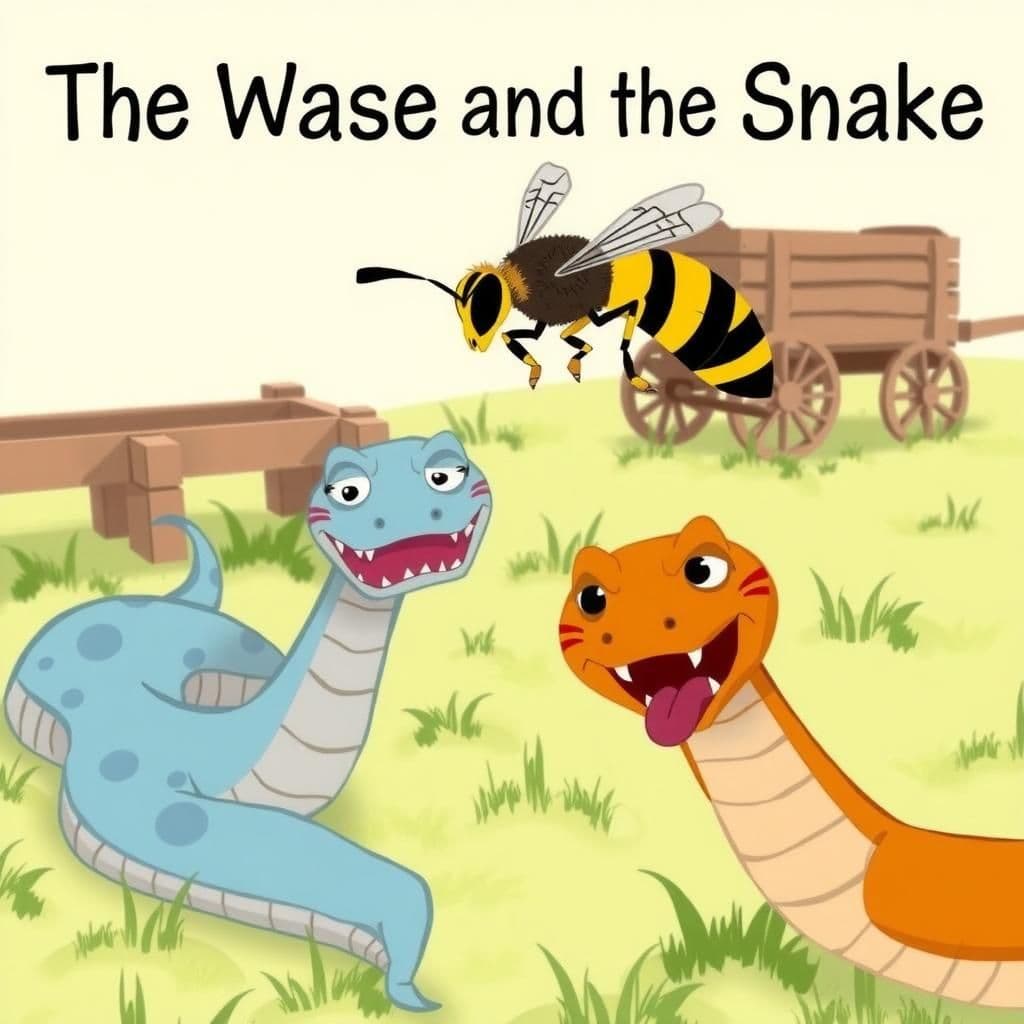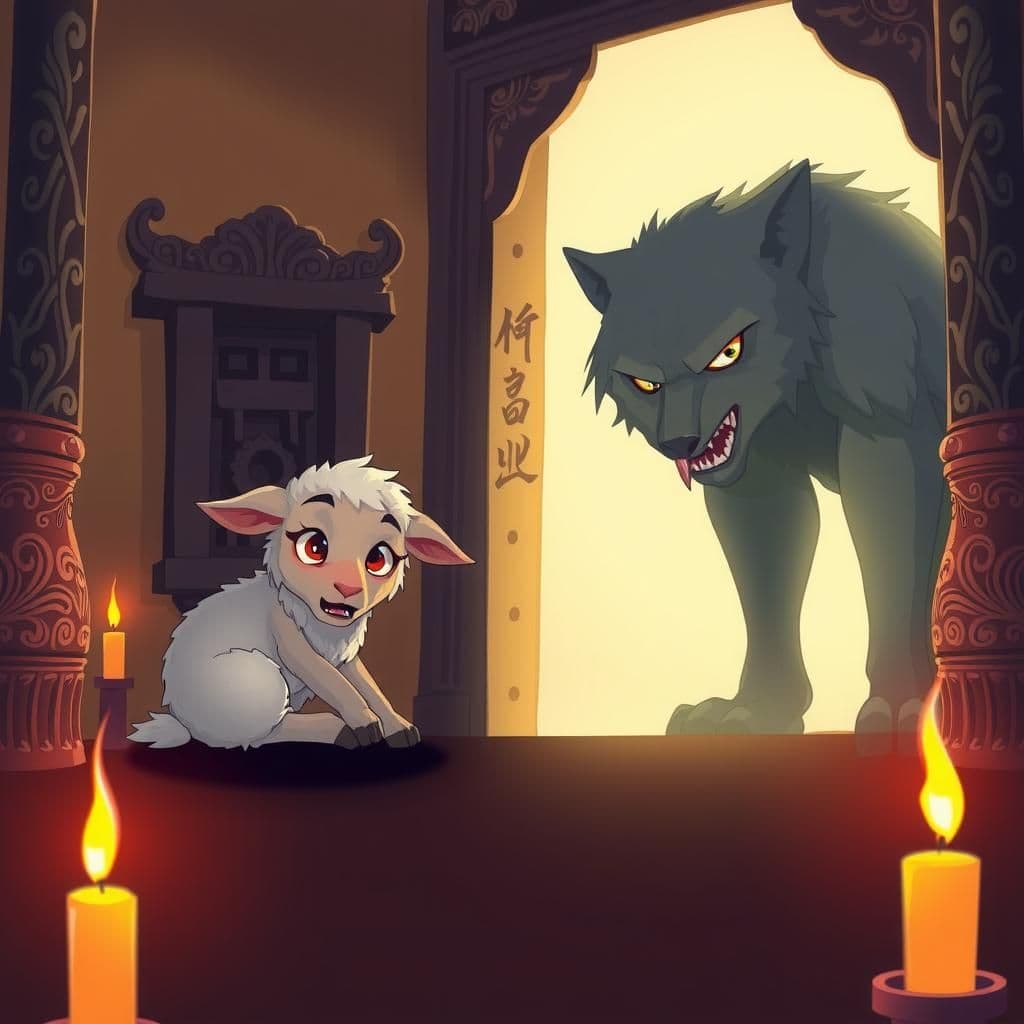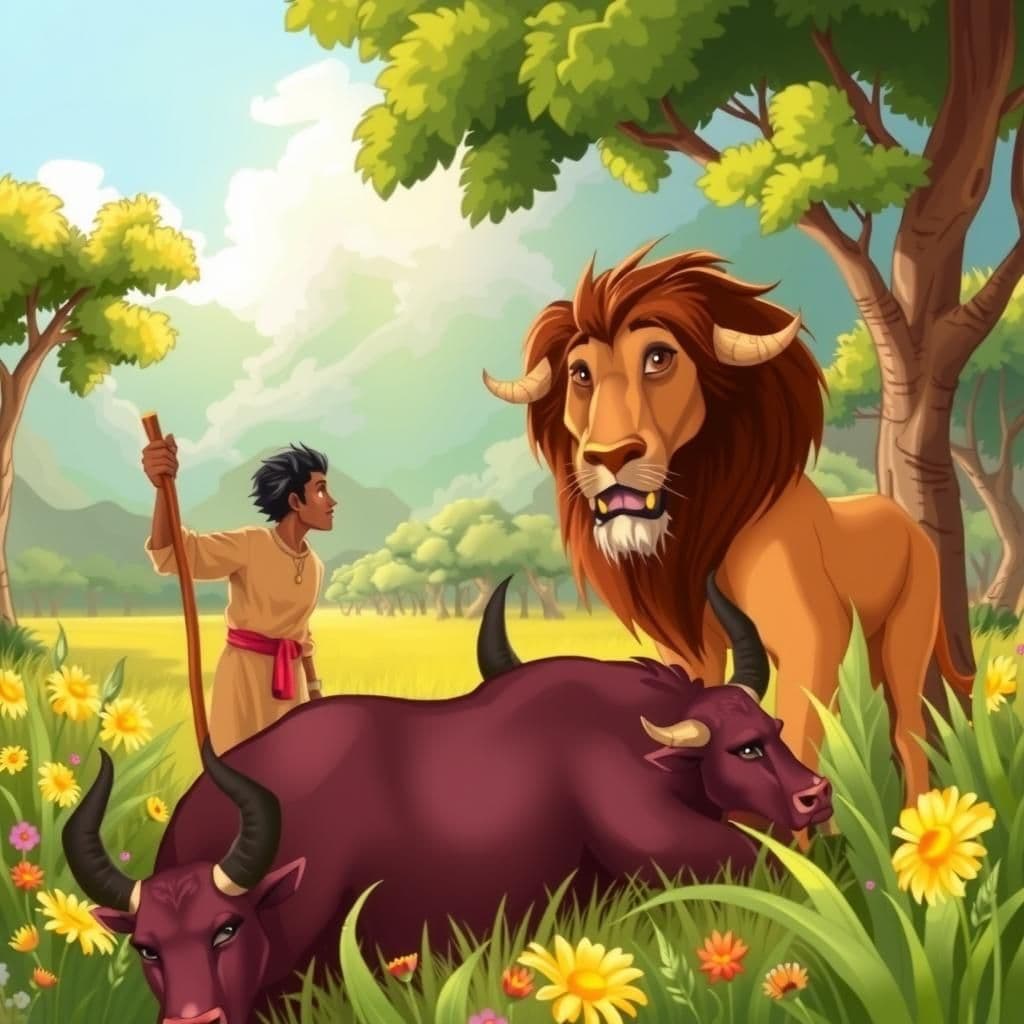The Wasp and the Snake

Story Summary
In "The Wasp and the Snake," a Wasp persistently stings a Snake, leading to the latter's demise. In a poignant act of desperation, the Snake chooses to place its head under a wagon's wheels, declaring that he and his tormentor shall perish together. This moral short story serves as a cautionary tale about the consequences of relentless torment and the lengths one might go to escape it, making it a thought-provoking read for both students and adults alike.
Click to reveal the moral of the story
The moral of the story is that sometimes, in the face of relentless torment, one may choose to take drastic measures that lead to mutual destruction rather than endure suffering alone.
Historical Context
This fable, often attributed to Aesop, reflects themes of revenge and the consequences of unchecked aggression, common in ancient storytelling. The narrative illustrates the idea that vengeance can lead to mutual destruction, a moral that resonates across various cultures and has been retold in different forms throughout history, emphasizing the dangers of allowing enmity to escalate. The story draws from a rich tradition of anthropomorphized animals symbolizing human traits and moral lessons, prevalent in fables from Greece to Asia.
Our Editors Opinion
This fable highlights the destructive nature of revenge and the lengths to which one might go to escape torment, even at their own expense. In modern life, we often encounter situations where individuals, feeling oppressed by a toxic relationship or workplace, may choose to sabotage themselves rather than allow their oppressor to continue thriving; for instance, an employee who, in a fit of frustration, intentionally underperforms or sabotages a project to spite a demanding boss, ultimately harming their own career in the process.
You May Also Like

An Optimist
In the story "An Optimist," two frogs trapped in the belly of a snake reflect on their fate, presenting a classic tale of storytelling with morals. While one frog bemoans their luck, the other humorously highlights their unique situation, suggesting they are not just victims but also the source of their sustenance, teaching lessons learned from stories about perspective and resilience. This bedtime moral story underscores the idea that even in dire circumstances, one can find a reason to remain optimistic.

The Lamb and the Wolf
In the simple short story "The Lamb and the Wolf," a Wolf chases a Lamb that finds refuge in a Temple. When the Wolf warns the Lamb that he would be sacrificed by the Priest, the Lamb wisely replies that being sacrificed is preferable to being eaten by the Wolf. This quick moral story highlights the theme of choosing a less harmful fate over a more dangerous one, making it a meaningful story with moral lessons suitable for class 7.

The Herdsman and the Lost Bull
In this very short moral story, a herdsman vows to sacrifice a lamb to the forest deities if he discovers the thief of his lost Bull-calf. When he finds a Lion devouring the Calf, panic sets in, leading him to wish for a full-grown Bull instead, illustrating the theme of moral-based storytelling about the consequences of one's vows and the instinct for self-preservation. This inspirational short story serves as a quick read with a valuable lesson about facing fears and the weight of promises.
Other names for this story
"Venomous Vengeance, The Stinging Duel, Clash of Nature, Wasp vs. Snake, Fatal Encounter, The Price of Revenge, Deadly Rivalry, The Final Sting"
Did You Know?
This fable illustrates the theme of vengeance and the destructive nature of conflict, highlighting how unresolved enmity can lead both parties to mutual destruction, even if one party is the aggressor. The Snake's choice to sacrifice itself underscores the idea that sometimes the desire for retribution can lead to tragic outcomes.
Subscribe to Daily Stories
Get a new moral story in your inbox every day.